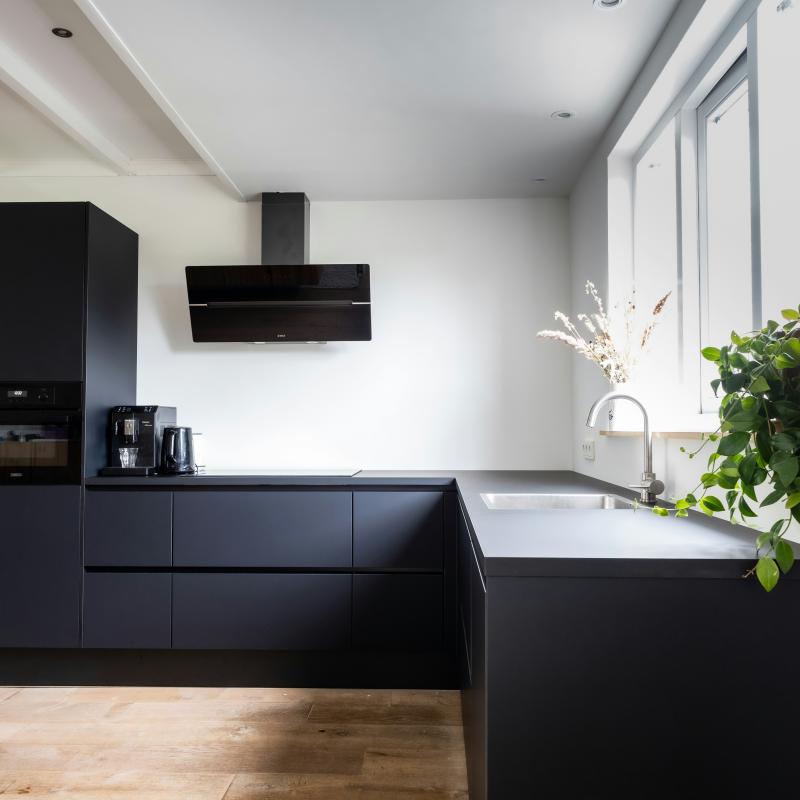29 Apr 2025
What are the advantages and disadvantages of glossy, matte, and lacquered fronts?

Choosing furniture fronts is one of the most important stages in designing a kitchen, bathroom, or any other built-in interior. The final visual effect and everyday comfort largely depend on whether we opt for a glossy, matte, or lacquered finish. Each of these options has its own characteristics that are worth understanding before making a final decision.
Glossy, matte, and lacquered surfaces differ not only in aesthetics but also in their functional properties – from resistance to dirt, durability, to the impact on the optical perception of space. Well-chosen fronts will not only highlight the interior’s style but also make everyday life easier. In the following sections, we will take a closer look at each of these options to help you decide which solution will work best for your interior.
Gloss that enlarges the space – glossy fronts
Glossy fronts are a popular choice in modern designs. Their greatest advantage is their ability to reflect light – the surface acts almost like a mirror, making the room seem larger and brighter. This feature is especially important in small kitchens or bathrooms, where optical enlargement of the space has a practical function. That’s why this type of finish fits perfectly with glamour and modern aesthetics, where visual impact and elegance are key.
However, gloss is not just about shine. Glossy surfaces can be demanding in daily use – they easily collect fingerprints, smudges, and dust. Although the smooth texture makes cleaning easier, the need for frequent wiping can be bothersome. Additionally, they are more prone to micro-scratches, which over time may diminish the surface's aesthetics.
Despite these drawbacks, glossy fronts remain a popular choice among those who value modernity and a striking visual effect. Proper lighting combined with glossy fronts can give an interior a luxurious character.
Subtle elegance – advantages and limitations of matte fronts
Matte finishes stand in contrast to glossy fronts. Their main advantage is their subtlety and understated character. Matte does not reflect light, creating a calmer and more balanced visual effect. Interiors with matte furniture often feel warmer, cozier, and "softer" to the eye.
This finish works perfectly with popular interior styles like Scandinavian, rustic, or minimalist. On one hand, it promotes a cohesive design; on the other, it doesn’t overwhelm the eyes with intense reflections. Interestingly, matte surfaces are more "forgiving" in everyday use: fingerprints and light dirt are much less visible than on glossy surfaces.
Unfortunately, matte also has its limitations. Although it hides smudges better, it is harder to clean greasy stains, especially older ones. The texture may slightly absorb dirt, requiring the use of special cleaning agents. In small spaces, it’s also worth noting that matte finishes do not diffuse light, which can make a room feel darker and smaller.
Lacquered fronts – a compromise between aesthetics and durability
Lacquered fronts are often seen as a premium option – mainly due to their manufacturing process. They are created by applying multiple layers of lacquer, which gives them exceptional smoothness, uniform color, and high durability. They are available in both matte and glossy versions, making them a versatile solution suitable for both modern and classic designs.
A major advantage of lacquered fronts is their resistance to moisture and mechanical damage. This feature is particularly desirable in kitchens and bathrooms – areas prone to frequent splashes and temperature changes. Thanks to the solid lacquer layer, furniture with this finish is less prone to warping and the effects of steam.
One downside worth mentioning is the relatively higher cost of these fronts compared to laminated or foil-coated alternatives. This is due to both the quality of the materials used and the labor-intensive lacquering process. Additionally, despite their resistance, lacquered fronts can still be susceptible to micro-scratches, especially in heavily used areas. Production time may also be slightly longer, which should be taken into account when planning a renovation or a new interior arrangement.
When to choose gloss, when matte, and when lacquer?
The decision about the type of fronts should consider both aesthetic preferences and the functional needs of the household. For those who appreciate modernity and the optical enlargement of space, glossy fronts will be an excellent choice. Meanwhile, fans of subtle, calm arrangements and practical solutions will likely opt for matte finishes. If, however, durability and color customization are priorities, it’s worth considering lacquered fronts – a compromise between style and resilience.
Choosing the right fronts might seem challenging, but a well-thought-out decision will ensure that your furniture remains both beautiful and functional for many years to come.